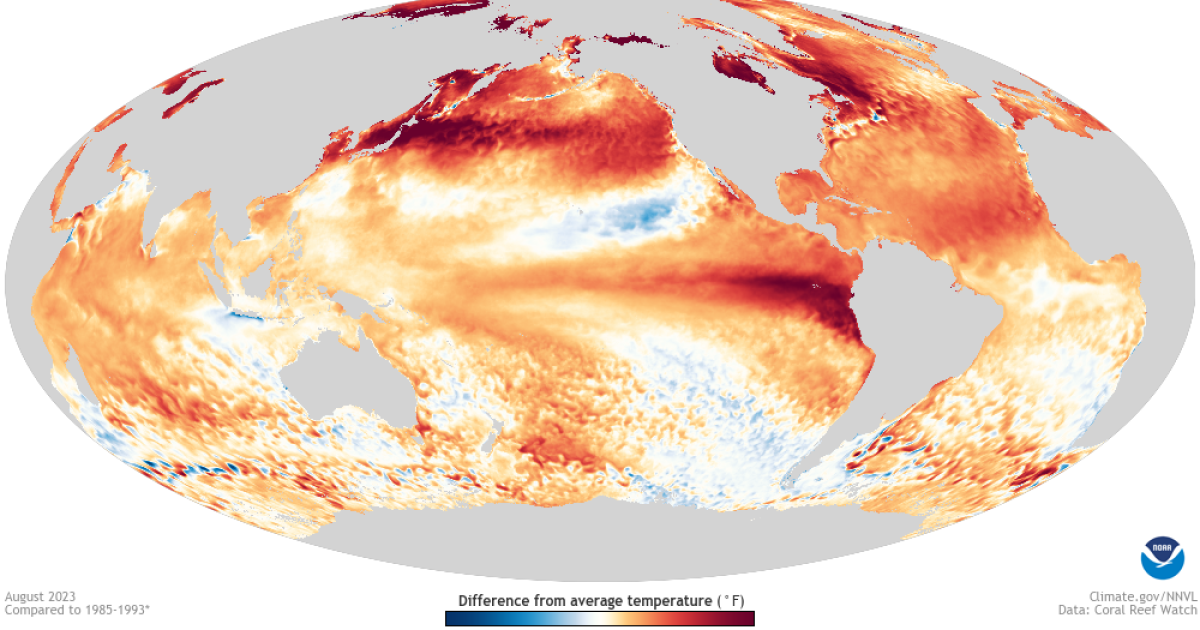Ancient El Niño Events Were Stronger and More Frequent, Study Finds

El Niño Isn’t Just a Modern Phenomenon
The El Niño event, characterized by a warm patch of ocean water in the tropical Pacific that alters global weather patterns, isn’t a new occurrence limited to modern history. In fact, recent research suggests this oscillation between warm El Niño and cold La Niña events dates back at least 250 million years. And, according to a modeling study led by Duke University researchers, the magnitude of these ancient temperature swings often surpassed what we experience today.
A Look Into the Deep Past
Published in the Proceedings of the National Academy of Sciences the week of October 21, the study explored the ancient ENSO using advanced climate modeling techniques. The simulations were no easy feat, given the significant shifts in Earth's configuration over millions of years. Instead of continuous simulations, researchers ran 26 separate "slices" of 10 million years each, simulating different periods stretching back 250 million years.
"Each experiment showed an active El Niño Southern Oscillation, and in nearly every case, the oscillation was stronger than what we observe now," said Shineng Hu, an assistant professor of climate dynamics at Duke University's Nicholas School of the Environment. Some periods exhibited slightly stronger oscillations, while others showed much more extreme swings in temperature.
When Continents Were in Different Places
It’s important to understand that Earth's layout looked vastly different back then. About 250 million years ago, during the Mesozoic Era, South America wasn't the separate continent we know today but was nestled within the vast supercontinent Pangea. The oscillations took place in the Panthalassic Ocean, which lay to the west.
By considering the influence of different boundary conditions, such as varying land-sea distributions, solar radiation levels, and higher atmospheric CO2 concentrations, the researchers gained insights into how these factors impacted ENSO's intensity. For instance, although solar radiation reaching Earth was about 2% lower than it is now, the planet's atmosphere and oceans were much warmer due to the elevated CO2 levels.
Unveiling the Role of Atmospheric Winds
One of the most intriguing findings from the study was the significant role played by surface winds, or "atmospheric noise," in determining the strength of the oscillation. While previous research largely focused on ocean temperatures, this study identified surface winds as a critical factor in understanding ENSO's past intensity.
Hu compared the oscillation to a pendulum, where atmospheric noise acts as a random "kick" that influences its motion. "Both the ocean's thermal structure and atmospheric noise are important when trying to understand why ancient El Niño events were stronger," he explained.
The Implications for Future Climate Predictions
Understanding these ancient patterns isn't just about satisfying curiosity; it’s crucial for refining future climate projections. "If we want to have a more reliable future projection, we need to understand past climates first," Hu emphasized. The insights from this study suggest that factors beyond just sea temperatures—like changes in wind patterns—need to be considered when predicting future climate trends.
The Bigger Picture
This research underscores the complexity of Earth's climate system and the interconnectedness of various environmental factors over geological timescales. By reconstructing past climate scenarios, scientists can better understand how natural forces shaped the world we know today—and how they might continue to influence the planet's future.
Acknowledgments
The study was supported by the National Natural Science Foundation of China and the Swedish Research Council, with simulations conducted at Peking University's High-performance Computing Platform.
Story Source:
Materials provided by Duke University. The original text of this story is licensed under a Creative Commons License. Note: Content may be edited for style and length.
Journal Reference:
- Xiang Li, Shineng Hu, Yongyun Hu, Wenju Cai, Yishuai Jin, Zhengyao Lu, Jiaqi Guo, Jiawenjing Lan, Qifan Lin, Shuai Yuan, Jian Zhang, Qiang Wei, Yonggang Liu, Jun Yang, Ji Nie. Persistently active El Niño–Southern Oscillation since the Mesozoic. Proceedings of the National Academy of Sciences, 2024; 121 (45) DOI: 10.1073/pnas.2404758121
0 Comments